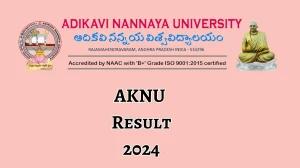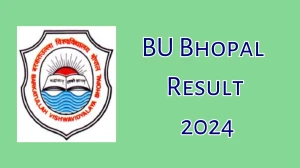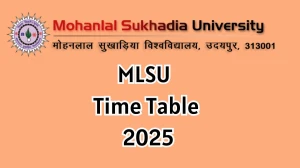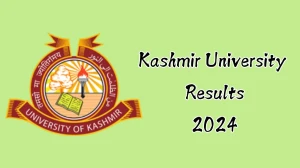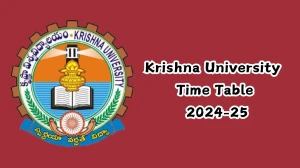- Rojgarlive »
- Education »
- CUET Geography Question Paper 2024 exams.nta.ac.in Download Geography Question Paper
CUET Geography Question Paper 2024 exams.nta.ac.in Download Geography Question Paper
by Sangeetha
Updated Apr 26, 2024
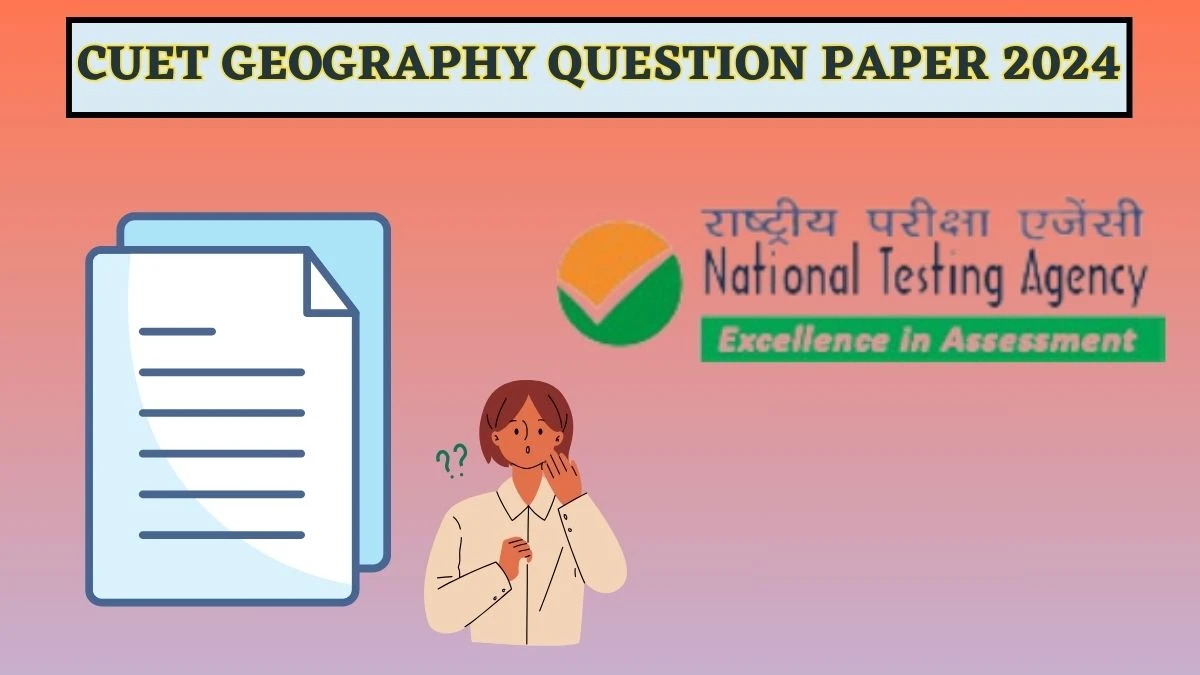
CUET Geography Question Paper 2024 @ exams.nta.ac.in
The NTA-administered CUET UG exam provides a range of domain-specific subjects, including Geography. The syllabus covers various topics such as Human Geography: Nature and Scope, Human Activities, Transport, Communication and Trade, and Human Settlements, among others. Adequate preparation is essential to increase your chances of securing admission to a top college in the country.
Check - CUET Geography Question Paper 2024
CUET Geography Question Paper - Questions with solutions
1. Out of the given options choose the most appropriate one to define 'Density of Population'.
A. Number of live births in a year per thousand of population.
B. Change in the number of persons of a territory during a specific period of time.
C. Ratio between the number of women and men in the population.
D. Number of persons living in per square km of an area.
Correct Option - D
Solution - Population density is the measurement of population per unit area, typically per square kilometre. It is calculated by dividing the total population of an area by the total land area of that area.
2. In Indonesia and Malaysia, shifting cultivation is known by which of the following names?
A. Jhuming
B. Milpa
C. Ladang
D. Viticulture
Correct Option-C
Solution- In Malaysia and Indonesia, the term "ladang" refers to shifting agriculture. This kind of farming entails clearing a forest patch, cultivating it for a few years until the fertility of the soil decreases, then leaving it and relocating to a new area.
3. In which of the following countries, Ruhr industrial region is located?
A. France
B. Spain
C. Germany
D. England
Correct Option-C
Solution- The Ruhr industrial area is in Germany which is famous for its iron and steel industries. It is one of the largest metropolitan centres in Germany consisting of a population density of 2800 persons per square kilometre.
4. Industry producing raw materials for other industries is known by which of the following?
A. Basic industry
B. Small scale industry
C. Cottage industry
D. Food processing industry
Correct Option-A
Solution- The term "basic industries" applies to businesses that manufacture processed goods or raw materials needed for an economy to function. These are essential sectors of the economy as it supplies the raw materials for industries.
5. Since which year did radio broadcasting start in India for the first time?
A. 1920
B. 1923
C. 1916
D. 1925
Correct Option-B
Solution- The first radio broadcast in India was made by the Radio Club of Mumbai in June 1923. Five months later, the Radio Club of Calcutta was established. The first Indian Broadcasting Company was established on July 23rd, 1927, but it was liquidated in less than three months.
6. Which of the following is the longest highway in India?
A. NH - 1
B. NH - 2
C. NH - 6
D. NH - 7
Correct Option-B
Solution- In India, National Highway 2 is the longest in India. It is approx 1325.6 km and connects Delhi and Kolkata. National Highway 2 passes through several significant towns and cities, such as Varanasi, Kanpur, Agra, and Allahabad.
7. Name the telecommunication service, which is not considered as "Mass Media"
A. Mobile phone
B. Radio
C. TV
D. Newspaper
Correct Option-A
Solution- The ability to communicate wirelessly through mobile devices—such as smartphones, tablets, and other portable gadgets—is referred to as mobile communication. Cell phones do not fall within the mass communication category.
8.In which of the following periods was a negative growth rate of population recorded in India?
A. 1901-1911
B. 1911-1921
C. 1951-1961
D. 1971-1981
Correct Option-B
Solution- The aftermath of World War I, which raged from 1914 to 1918, is encompassed in the years 1911 to 1921. Due to war-related causes such as displacement and casualties, numerous countries saw notable changes in their populations both during and after the conflict.
9. Which one of the following is the length of Panama Canal?
A. 160 Km
B. 72 Km
C. 117 Km
D. 195 Km
Correct Option- B
Solution- The canal is 72 km long and includes 12 km of deep cutting. The Pacific Ocean is on the western side, and the Atlantic Ocean is on the eastern side. These two oceans are connected through the Panama Canal, which was constructed by the U.S. government across the Isthmus of Panama.
10. "'Neeru - Meeru' a watershed development and management programme is associated with which of the following?"
A. Rajasthan
B. Andhra Pradesh
C. Tamil Nadu
D. Haryana
Correct Option-B
Solution- The Indian state of Andhra Pradesh is home to the "Neeru Meeru" management scheme. To guarantee the sustainable use of water resources and lessen the effects of water shortage, this program focuses on water management and conservation initiatives, especially in rural regions.
11. The Big Trunk Route runs through which of the following?
A. The North Atlantic Ocean
B. The Mediterranean - Indian Ocean
C. The South Atlantic Ocean
D. The South Pacific Ocean
Correct Option-A
Solution- Several important shipping routes indeed cross the North Atlantic Ocean, one of which is known as the "Big Trunk Route." Connecting ports in Europe, North America, and occasionally beyond, the North Atlantic Ocean plays a crucial role in the transportation of goods by sea. Trade between large ports in Europe (e.g., Rotterdam, Hamburg) and the United States (e.g., New York, Norfolk) is facilitated by this route. It is among the world's busiest and most significant maritime waterways.
12. A geothermal energy plant has been commissioned at which of the following places?
A. Okhla in Delhi
B. Tarapur in Maharashtra
C. Manikaran in Himachal Pradesh
D. Narora in Uttar Pradesh
Correct Option-C
Solution- One type of renewable energy that comes from the inherent heat of the Earth's interior is geothermal energy. The heat retained from the planet's formation and the radioactive disintegration of minerals in the Earth's crust are the sources of this energy. In India, this site is commissioned in Manikaran, Himachal Pradesh among the given options. Some other Indian sites are Tattapani, Chhattisgarh, Surajkund, Gujarat, etc.
13. Drought Prone Area Programme was initiated during which five year plan in India?
A. Fourth
B. Second
C. Sixth
D. Fifth
Correct Option-A
Solution- India launched the 'Drought Prone Area Programme' in 1969, as part of the Fourth Five-Year Plan. It was started to deal with the problems in areas that are prone to drought and to put policies in place to lessen the effects of drought on rural livelihoods and agriculture.
14. Who among the following is the author of "The Population Bomb"?
A. Peter Haggett
B. Ehrlich
C. A. N. Strahler
D. Thomas Malthus
Correct Option-B
Solution- Paul R. Ehrlich is the author of "The Population Bomb". The 1968 publication of the book sparked debate on population growth and its possible effects on human society and the environment.
15. The Swachh Bharat Mission (SBM) launched by the Government of India is a part of:-
A. Rural Renewal Mission
B. Rural Souchalaya Mission
C. Urban Renewal Mission
D. Urban Souchalaya Mission
Correct Option-B
Solution- The government of India launched the Swachh Bharat Mission, also known as the Swachh Bharat Abhiyan or Clean India Mission, on October 2, 2014, to eradicate open defecation, enhancing solid waste management.
16. Which one of the following state of India has the lowest rank in the human development index according to Indian National Human Development Report 2011?
A. Rajasthan
B. Bihar
C. Chhattisgarh
D. Haryana
Correct Option-C
Solution- According to the 2011 Indian National Human Development Report, Chhattisgarh was the state with the lowest Human Development Index (HDI) ranking. The HDI evaluates overall progress by taking into consideration variables including income, education, and health. Regretfully, in terms of human development, Chhattisgarh lagged behind the national average throughout that time.
17. In the production of cotton, India stands at which rank in the world cotton production?
A. First
B. Second
C. Third
D. Fourth
Correct Option-B
Solution- For several years, it has been among the top producers of cotton worldwide. After China, which is frequently the world's largest producer, India has typically come in second in terms of total cotton production.
18. The important underground railways, 'Channel Tunnel' joins which two cities of Europe?
A. Rome-Berlin
B. Geneva-Amsterdam
C. London-Paris
D. Moscow-Stockholm
Correct Option- C
Solution- The Channel Tunnel or Eurotunnel, is a tunnel that links the United Kingdom and France. It is approx 50 kilometres long and runs between London and Paris. It is made up of three tunnels and has the longest underwater section of any tunnel on the planet.
19. Which of the following is not a metallic mineral?
A. Iron
B. Mica
C. Copper
D. Bauxite
Correct Option-B
Solution- Mica is a metallic mineral.It has special qualities like transparency, electrical insulation, heat resistance, and flexibility. It is used in construction materials, cosmetics, electronics, and insulation industries.
20. Name the city where Asia's largest slum Dharavi is located?
A. Delhi
B. Mumbai
C. Kolkata
D. Chennai
Correct Option-B
Solution- Dharavi(Mumbai) is one of the biggest slums in Asia. It has experienced several problems, like overcrowding, poor infrastructure, and a lack of essential utilities like clean water and sanitation.
CUET Geography Question Paper 2024 - FAQs
The difficulty level of the CUET Geography section is moderate, hence it’s not too difficult to score good marks provided that you take mock tests and practice daily.
Multiple choice questions or MCQs are asked in the CUET exam.
